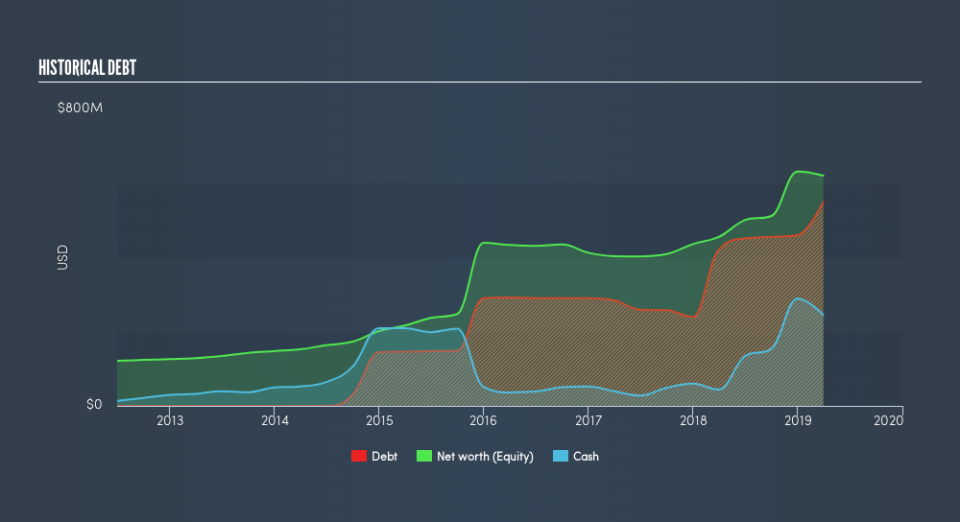What does Envestnet, Inc.'s (NYSE:ENV) Balance Sheet Tell Us About Its Future?

Want to participate in a short research study? Help shape the future of investing tools and you could win a $250 gift card!
Stocks with market capitalization between $2B and $10B, such as Envestnet, Inc. (NYSE:ENV) with a size of US$3.6b, do not attract as much attention from the investing community as do the small-caps and large-caps. While they are less talked about as an investment category, mid-cap risk-adjusted returns have generally been better than more commonly focused stocks that fall into the small- or large-cap categories. ENV’s financial liquidity and debt position will be analysed in this article, to get an idea of whether the company can fund opportunities for strategic growth and maintain strength through economic downturns. Don’t forget that this is a general and concentrated examination of Envestnet’s financial health, so you should conduct further analysis into ENV here.
Check out our latest analysis for Envestnet
Does ENV Produce Much Cash Relative To Its Debt?
Over the past year, ENV has ramped up its debt from US$422m to US$551m , which includes long-term debt. With this rise in debt, the current cash and short-term investment levels stands at US$246m to keep the business going. Moreover, ENV has generated US$106m in operating cash flow over the same time period, leading to an operating cash to total debt ratio of 19%, meaning that ENV’s current level of operating cash is not high enough to cover debt.
Can ENV meet its short-term obligations with the cash in hand?
At the current liabilities level of US$339m, it seems that the business has maintained a safe level of current assets to meet its obligations, with the current ratio last standing at 1.03x. The current ratio is calculated by dividing current assets by current liabilities. Generally, for Software companies, this is a reasonable ratio since there is a bit of a cash buffer without leaving too much capital in a low-return environment.
Is ENV’s debt level acceptable?
With debt reaching 75% of equity, ENV may be thought of as relatively highly levered. This is not unusual for mid-caps as debt tends to be a cheaper and faster source of funding for some businesses. But since ENV is presently unprofitable, sustainability of its current state of operations becomes a concern. Maintaining a high level of debt, while revenues are still below costs, can be dangerous as liquidity tends to dry up in unexpected downturns.
Next Steps:
ENV’s high cash coverage means that, although its debt levels are high, the company is able to utilise its borrowings efficiently in order to generate cash flow. Since there is also no concerns around ENV's liquidity needs, this may be its optimal capital structure for the time being. This is only a rough assessment of financial health, and I'm sure ENV has company-specific issues impacting its capital structure decisions. I suggest you continue to research Envestnet to get a better picture of the mid-cap by looking at:
Future Outlook: What are well-informed industry analysts predicting for ENV’s future growth? Take a look at our free research report of analyst consensus for ENV’s outlook.
Valuation: What is ENV worth today? Is the stock undervalued, even when its growth outlook is factored into its intrinsic value? The intrinsic value infographic in our free research report helps visualize whether ENV is currently mispriced by the market.
Other High-Performing Stocks: Are there other stocks that provide better prospects with proven track records? Explore our free list of these great stocks here.
We aim to bring you long-term focused research analysis driven by fundamental data. Note that our analysis may not factor in the latest price-sensitive company announcements or qualitative material.
If you spot an error that warrants correction, please contact the editor at editorial-team@simplywallst.com. This article by Simply Wall St is general in nature. It does not constitute a recommendation to buy or sell any stock, and does not take account of your objectives, or your financial situation. Simply Wall St has no position in the stocks mentioned. Thank you for reading.

